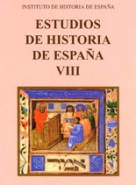El matrimonio clandestino en el siglo XVII: entre el amor, las conveniencias y el discurso tridentino
Palavras-chave:
Concilio de Trento, Literatura moral, Catecismos Matrimonios clandestinos Siglo XVII, Matrimonios sentimentales Estrategias socialesResumo
The Council of Trent —Tametsi decree— following the position started in the IV Letran Council, declared invalid clandestine marriages, undertaken out of the church, without the required publicity, presence of the parish priest or witnesses; regulation that would take some time to be accepted by the marriages of the time. In the baroque Seville, clandestine marriages persisted, either as a representation of love unions without the parents consent, or as a strategy for social promotion used by families of lower condition.Downloads
Não há dados estatísticos.
Downloads
Publicado
2017-02-22
Como Citar
Candau Chacón, M. L. (2017). El matrimonio clandestino en el siglo XVII: entre el amor, las conveniencias y el discurso tridentino. Estudios De Historia De España, 8, 175–202. Obtido de http://200.16.86.39/index.php/EHE/article/view/351
Edição
Secção
Artículos
Licença































